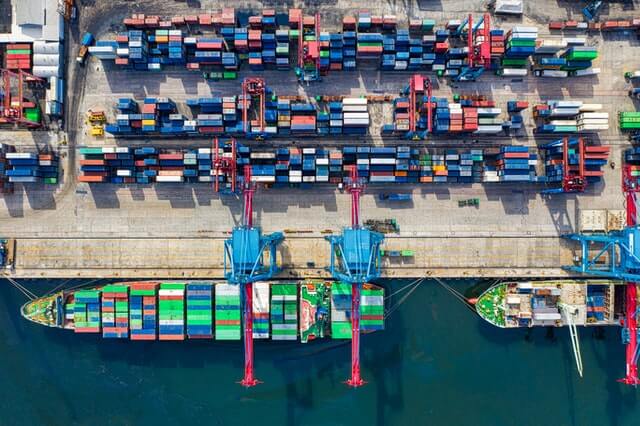Future Of Multilateral Trade Rules

________________________________________________________________________________
This Blog is written by Jatin Pandey from Kirit P. Mehta School of Law, NMIMS Indore. Edited by O.S.S.Sarada Rasagnya.
________________________________________________________________________________
INTRODUCTION
The General Agreement on Tariff and Trade (GATT) was signed at the conference in Geneva 1947. It came into force on 1 January 1948. After almost five decades of its existence; The World Trade Organization (WTO) was formed by reorganizing in January 1,995. GATT was a multilateral trade agreement that laid down rules for conduct International commercial relations and provided a forum for multilateral negotiations and also trying to resolve the trade issues and phasing out tariffs and other non-tariff Trade barriers. The agreement was created largely on non-discrimination principles and reciprocity so that trade is liberalized. With the exception of Custom Unions and Free Trade Areas (FTAs), all contracting parties were generally bound by the agreement’s perhaps notably clause for a Most Favoured Nation (MFN). Domestic-industries should be protected by means of custom tariffs, import quotas, and other restrictive trade practices. The agreement also provided for tariff levels to be binding negotiated by setting up a mechanism for grievance settlement among member countries put forward by members who contended that their rights.
SIGNIFICANCE OF MULTILATERAL TRADE RULES
Things had improved by the late 1990’s. The acceptance of multilateral approaches to governance began to falter. The Seattle Ministerial Conference has hinted at things to come. The Doha development round was launched in November 2001 and it was hoped that this will provide a forum for multilateral trade to resolve the development concerns. Multilateral trade rules provide safeguards for securing labour markets from negative reforms and are also in the interests of WTO members strongly. There are protection measures which can be used if unexpected changes in trade flows impact employment.
Governments may also file trade disputes if they find jobs to be adversely affected because trading partners do not adhere to multilateral agreements. In this context, it is important to point out a recent trend of employers that seek the settlement of a dispute, rather than business representatives of different countries. It may become a growing trend in a context in which trade is increasingly taking place within multinationals with the potential consequence that companies are reluctant to promote trade conflicts between countries if they have a stake in both markets. There are also questions about the set of rules and whether they all controlled by those rules. The trade war between the US and China is maybe the most visible manifestation of these concerns.
IMPACT ON FUTURE ECONOMY BY MULTILATERAL TRADE RULES
After World War II, nations around the world, led by the United States and a and other developed countries have pursued a more transparent and non-discriminatory system of trade with the objective to raise the economic well-being of all countries. In 1995 the WTO succeeded in the GATT. The WTO was established as an, unlike the GATT as a permanent organization. The WTO is an international organization of 164 members that was established to monitor and administer multilateral trade laws, serve as a platform for negotiations on trade liberalization and to settle trade disputes. The United States was a major force behind the creation of the WTO in 1995, as well as the rules and agreements that emerged from multilateral trade.
As with the GATT, however, the WTO secretariat and support staff is small by small universal norms and lack autonomous control. The Marrakesh Agreement is the framework in which the different agreements, annexes, partnership schedules, and understandings are concluded. The Marrakesh Agreement established the WTO as a legal international organization and establishes its functions, structure, secretariat, administrative processes, decision making, accession, entry-in, removal, and other matters of settlements.
LEGISLATION
Article 23 of the understanding of dispute settlement provides exclusive jurisdiction for all disputes arising under WTO agreements covered by the WTO dispute resolution mechanism. Article 23.1 of the Dispute Settlement Understanding states that “when members seek the redress of a violation of obligations or other nullification or impairment of benefits under the covered agreements or an impediment to the attainment of any objective of the covered agreements, they shall have recourse to, and abide by the rules of procedures of this Understanding”. Article 23.2 prohibits WTO members to “make a determination to the effect that a violation has occurred except through recourse to dispute settlement in accordance with the rules and procedures of this Understanding”
multilateral commitments Article 27(3)(b) of the TRIPS Agreement will refer to the agricultural sector, which makes it compulsory for WTO members to provide for a plant variety protection; export subsidy reduction obligations provided for in Article 9 of Agreements; on Agricultural.
FUTURE CHALLENGES
In order to maintain the world trading system’s credibility, WTO rights and obligations must continue to adapt to the new challenges arising from the increasing globalization of economic activities. To do so, WTO members need to both sustain progress in implementing The WTO should address these problems head-on and dispel the suspicions created by recent negotiations on services that it cannot solve these pressing issues.
While environment and labor are not entirely new issues in the trade debate, there has been a greater concern that countries can gain unfair trade benefits through disregard for the environment or through unfair labor practices (especially child labor). In some cases, trade constraints were imposed as a stick for prompt acceptance of environmental and social standards. Indeed, some multilateral environmental agreements (e.g., the Montreal Protocol on chlorofluorocarbons) condone the use of trade sanctions to enforce treaty obligations
Uruguay Round results to date and start addressing issues that are likely to dominate the 21st-century world. Promoting new trade liberalization initiatives, including the “built-in” and negotiating agenda mandated by the Uruguay Round accords also ensuring the complementary of regional and multilateral trade reforms by augmenting WTO institutional reforms. At the other hand, trade policies aimed at being environmentally friendly or upholding rights have also obscured the intentions of the security workers. For example, the concerns of developed countries about these steps were fed by their experience with the Generalized System of Preferences GSP) programs, for which eligibility is conditioned in part on labor standards and human rights. WTO members need to examine the extent to which new international trade rules could resolve or mitigate problems in both these areas in order to lay the foundation for the negotiation of new WTO rights and obligations.
ANALYSIS
The last Ministerial Conference of the WTO was held in Buenos Aires from 10-13 December 2017, Argentina. In general, the Ministerial convenes every two years to make decisions and announce them multilateral trade agreements progresses. After countries couldn’t complete the Doha Round many questioned what could be achieved effectively in the 11th Ministerial for 2017. WTO members had worked intensively in several areas to build consensus on proposals, including reductions in subsidies for fisheries, a permanent solution for public food stocks security, regulations regarding domestic services, and e-commerce. Some leaders called for different initiatives in areas such as facilitation of investment; others such as India promoted greater priority on the facilitation of trade-in service.
Besides structural change, the ongoing Doha Round slowdown is impacting the system’s ability to address pressing global challenges. Over the past 17 years, public perceptions of the relevance and legitimacy of the organization have depended heavily on the degree to which it can claim to respond effectively to broader demands of public policy in areas such as food security environmental protection, labour standards and, more recently, the transition towards a low-carbon economy. The WTO is not what it was ten years ago, or so ago. Many new developing countries have since joined, and the playing field has been transformed by shifts in the balance of global economic and political power. Accordingly, there have arisen new requirements and specific priorities, including demands on decision-making processes and their fairness and accountability.
CONCLUSION
The future outlook of the multilateral trading system is the subject of growing debate as it faces serious challenges, some of them longstanding and some more recent. Some experts look at the system as stagnant for as long as it faces a crisis; others remain optimistic about the current state of Issues that could spur new momentum towards reforms and alternative approaches to negotiation forward. Despite differences of opinion, there is a growing consensus that the status quo is no longer relevant to sustainable and urgent need to improve the system and find new ground compromises given that the WTO remains the core of the trade framework. There continues to be a debate about the path forward. Recent WTO reform proposals and new rules are under development and have developed new concepts, but practical solutions and next steps between the countries participating in negotiations and the wider WTO have yet to be decided. Several events on the horizon may provide additional impetus for the near term resolving differences and assessing progress.
Finally, in parallel with efforts to revive the Doha Round, members were able to undertake a number of pressing global challenges to address. This may include questions about the trade aspect of food security, food prices and export restrictions; possible trade effects of new domestic policies designed to counter climate change; or highly contentious issues concerning foreign exchange policies.
REFERENCES
(1)https://www.ilsa.org/Jessup/Jessup2020/Basic%20Materials/Graewart%2C%201%282%29%20Contemp.%20Asia%20Arb.%20J.%20287.pdf
(2) https://crawford.anu.edu.au/acde/asarc/pdf/papers/conference/CONF2001_11.pdf
(3) https://unctad.org/en/Docs/poldcd107.en.pdf
(4) https://www.cfr.org/backgrounder/whats-next-wto

